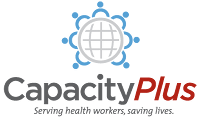National Policy
Tracking Universal Health Coverage: First Global Monitoring Report
This report is the first of its kind to measure health service coverage and financial protection to assess countries’ progress towards universal health coverage. It shows that at least 400 million people do not have access to one or more essential health services and 6% of people in low- and middle-income countries are tipped into or pushed further into extreme poverty because of health spending. [from introduction]
- 1119 reads
Moving Toward Universal Access to Health and Universal Health Coverage: A Review of Comprehensive Primary Health Care in Suriname
This study’s objective is to provide an overview of comprehensive primary health care (CPHC) development and implementation in Suriname in peer-reviewed literature. [adapted from abstract]
- 819 reads
Testing Health Microinsurance Through Savings Groups in Benin
In Benin, CRS has been piloting a health microinsurance (HMI) product since March 2012. We have been delivering it to members of Savings and Internal Lending Communities (SILC) through NSIA (a local insurance company) and Caritas Natitingou in northern Benin. From March 2012 to December 2014, coverage has nearly doubled from 715 to more than 1,300 SILC members and their dependents. The project team recently conducted an evaluation of progress. The evaluation included 12 SILC focus groups to learn more from their experiences in using the health microinsurance product. [from introduction]
- 702 reads
Global Conference on Universal Health Coverage for Inclusive and Sustainable Growth: Lessons from 11 Country Case Studies: A Global Synthesis
There is a growing demand from low- and middle-income countries (LMICs) to understand the conditions and requirements for achieving UHC. Following the occasion of the 50th anniversary of Japan’s own achievement of UHC(in 1961), the World Bank Partnership Program on Universal Health Coverage (the Program) was conceived as a joint effort by the government of Japan and the World Bank to respond to this growing demand from LMICs for technical advice and investment support for designing and implementing UHC policies and strategies. [from introduction]
- 506 reads
Basic E-learning Course on Human Rights and Health
Disseminate the links between health and human rights and explain the international human rights instruments that protect the right to health and other related human rights. [from materials]
- 505 reads
Human Resources for Health Issues in Kenya: Constraints and opportunities from a recent baseline survey
This paper summarizes the outcome of a rapid baseline survey and reveals critical gaps in the policy framework for HRH as well as resource constraint that must be addressed through additional budgets and better articulation of health workforce issues beyond personnel emoluments. The study shows the need for civil society organizations to join hands with development partners, Faith based organizations to advocate and support implementation of specific measures to address well documented HRH challenges. [from introduction]
- 722 reads
Global Evidence on Inequities in Rural Health Protection: New Data on Rural Deficits in Health Coverage for 174 Countries
This paper presents global estimates on rural/urban disparities in access to health-care services. The report uses proxy indicators to assess key dimensions of coverage and access involving the core principles of universality and equity. Based on the results of the estimates, policy options are discussed to close the gaps in a multi-sectoral approach addressing issues and their root causes both within and beyond the health sector. [from abstract]
- 714 reads
Inequities in Chinese Health Services: An Overview of the Recent History of Chinese Health Care and Recommendations for Reform
The Chinese health system was once held up as a model for providing universal health care in the developing world in the 1970s, only to have what is now considered one of the least equitable systems in the world according to the World Health Organization. This article begins with a brief look at what equity in health services entails, and considers the inequities in access to health services in China among different segments of the population. [from abstract]
- 415 reads
The Role of Institutions on the Effectiveness of Malaria Treatment in the Ghanaian Health Sector
The objective of this study is to find the effect of institutional factors on the quality of care. The institutional factors examined were mainly the extent of decentralization between government and health facilities, as well as between health workers and facility administration, the hiring procedure, and job satisfaction. [from abstract]
- 450 reads
Health Financing Sustainability Policy: Republic of Rwanda
The Health Financing sustainability policy is based on the overall health sector policy which is also in compliance with the Vision 2020 of the Government of Rwanda. The health sector has been characterized by successful innovations in health financing such as the Community Based Health Insurance Schemes (CBHIS), the Performance Based Financing (PFP) approach for both health facilities and the Comm unity Health Workers (CHW) cooperatives whose positive impact has been documented. [from forward]
- 647 reads
Health Sector Policy: Republic of Rwanda
Rwanda’s Health Sector Policy translates the Government’s overall vision of development in the health sector, as set out in Vision 2020 and the Economic Development and Poverty Reduction Strategy (EDPRS II 2013-2018). Since the adoption of the previous Health Sector Policy in 2005, much has changed in terms of national socio-economic development and more specifically in the health sector.
- 595 reads
Midterm Review of National Health Plans: An Example from the United Republic of Tanzania
In the health sector, planning and resource allocation at country level are mainly guided by national plans. For each such plan, a midterm review of progress is important for policy-makers since the review can inform the second half of the plan’s implementation and provide a situation analysis on which the subsequent plan can be based. [from abstract]
- 687 reads
Strengthening Health Systems for Resilience
In countries with high levels of poverty or instability and with poor health system management and governance, people are highly vulnerable to shocks associated with ill health, including major epidemics. An effective health system can help build their resilience by reducing exposure to infection and minimising the impact of sickness on livelihoods and economic development. [from introduction]
- 551 reads
Health in All Policies: Training Manual
The purpose of this manual is to provide a resource for training to increase understanding of Health in All Policies (HiAP) by health and other professionals. It is anticipated that the material in this manual will form the basis of two- or three-day workshops, which will: Build capacity to promote, implement and evaluate HiAP; Encourage engagement and collaboration across sectors; Facilitate the exchange of experiences and lessons learned; Promote regional and global collaboration on HiAP; and Promote dissemination of skills to develop training courses for trainers. [from overview]
- 748 reads
Maternal Mortality: A Cross-Sectional Study in Global Health
Although most of maternal deaths are preventable, maternal mortality reduction programs have not been completely successful. As targeting individuals alone does not seem to be an effective strategy to reduce maternal mortality (Millennium Development Goal 5), the present study sought to reveal the role of many distant macrostructural factors affecting maternal mortality at the global level. [from abstract]
- 556 reads
Barriers to Accessing Health Care Services for Children With Disabilities in Southern Africa: The Case of Namibia
The review found out that the barriers to access occur when the density of health care facilities is low and in settings where the transportation system, road networks and infrastructure is poor. Most of the studies under review further noted that even in cases where health services are well distributed and available other factors act as barriers to access. [from abstract]
- 753 reads
Rural-Proofing for Health: Guidelines
A guide to accounting for rural contexts in health policy, strategic planning and resourcing. Addressing the
specific rural health context in policy design, budget allocations and implementation plans is not yet a standard process in South Africa. This guide addresses that, to ensure that “the rural health context” is addressed adequately
when new policies and budgets are drawn up and implemented in the beautiful rural parts of our country. [adapted from resource]
- 723 reads
An Overview of the Mental Health System in Gaza: an Assessment Using the World Health Organization's Assessment Instrument for Mental Health Systems (WHO-AIMS)
Mental health system reform is urgently needed in Gaza to respond to increasing mental health consequences of conflict. Evidence from mental health systems research is needed to inform decision-making. We aimed to provide new knowledge on current mental health policy and legislation, and services and resource use, in Gaza to identify quality gaps and
areas for urgent intervention. [from abstract]
- 624 reads
Right to Health in Nepal: Commitment versus Challenges
This paper discusses on policy provisions as well as synchronization of Nepal’s efforts on fulfilling its commitment for right to health. [from abstract]
- 534 reads
Universal Health Coverage Reforms: Implications for the Distribution of the Health Workforce in Low- and Middle-Income Countries
This paper suggests that there are risks associated with health-financing reforms, for the geographical distribution
and performance of the health workforce. These risks require greater attention if poor and rural populations are to benefit from expanded financial protection. [from abstract]
- 667 reads
How The Government Intervention Affects the Distribution of Physicians in Turkey Between 1965 and 2000
The aim of this study is to analyse the distribution of physicians, GPs and specialists between the years 1965-2000 and the efficiency of the strict 15 year government intervention (1981-1995). [from abstract]
- 580 reads
Improving Financial Access to Health Care in the Kisantu District in the Democratic Republic of Congo: Acting Upon Complexity
Comzmercialization of health care has contributed to widen inequities between the rich and the poor, especially in settings with suboptimal regulatory frameworks of the health sector. Poorly regulated fee-for-service payment systems generate inequity and initiate a vicious circle in which access to quality health care gradually deteriorates.
- 537 reads
Tajikistan Country Assessment: Focus on Cardiovascular Disease
Cardiovascular diseases are the predominant cause of death in Tajikistan, with a growing burden of ischemic heart disease, strokes and cirrhosis between 1990 and 2010. Considering this, this report focuses on cardiovascular diseases and their risk factors, such as hypertension and poor nutrition; it is estimated that 40% of the Tajik population is overweight and 9% is obese. [from abstract]
- 611 reads
Explorations on People Centredness in Health Systems
Health systems should ultimately seek to serve people and society. They must aim to bring value in people’s lives not only by caring for them when sick or giving support to prevent or limit illness and its effects, but also, more broadly, by offering the promise of economic security to all for times of great vulnerability. [from introduction]
- 532 reads
Research Priority Setting for Health Policy and Health Systems Strengthening in Nigeria: The Policymakers and Stakeholders Perspective and Involvement
Nigeria is one of the low and middle income countries (LMICs) facing severe resource constraint, making it impossible for adequate
resources to be allocated to the health sector. Priority setting becomes imperative because it guides investments in health care, health research and respects resource constraints. The objective of this study was to enhance the knowledge and understanding of policymakers on research priority setting and to conduct a research priority setting exercise. [from abstract]
- 8581 reads
Universal Health Coverage for Inclusive and Sustainable Development: Country Summary Report for Indonesia
Indonesia, a low-middle income country of around 242 million people, has made impressive gains in health over the past few decades, notably in increased life expectancy and reduced infant and child mortality rates. There has been less progress in improving maternal mortality and malnutrition. [from abstract]
- 589 reads
Universal Health Coverage Assessment: People’s Republic of Bangladesh
This document provides a preliminary assessment of the Bangladeshi health system relative to the goal of universal
health coverage, with a particular focus on the financing system and related aspects of provision. [from introduction]
- 1096 reads
Información Para la Calidad del Sistema de Salud en Colombia: Una Propuesta de Revisión Basada en el Modelo Israelí
El objetivo del estudio es contribuir a mejorar la salud en Colombia mediante el desarrollo de un sistema nacional de indicadores de desempeño del sector salud. Para ello se utilizó un análisis descriptivo de datos secundarios de Colombia e Israel que, como Colombia, tiene un modelo de competencia regulada. [from abstract]
- 538 reads
Progress Toward Universal Health Coverage in ASEAN
The Association of Southeast Asian Nations (ASEAN) is characterized by much diversity in terms of geography, society, economic development, and health outcomes. The health systems as well as healthcare structure and provisions vary considerably. Consequently, the progress toward Universal Health Coverage (UHC) in these countries also varies. This paper aims to describe the progress toward UHC in the ASEAN countries and discuss how regional integration could influence UHC. [from abstract]
- 563 reads
The Drivers of Universal Health Care in South Africa: The Role of Ideas, Institutions and Actors
This paper outlines the opportunities and challenges posed by the proposed NHI [National Health Insurance] reforms in South Africa. It begins by explaining the country’s current system of health care provision including its human resource structure, functions and cost implications. It then summarizes the deficits and limitations of the current two-tiered health system and discusses what NHI is trying to achieve within this context and how it hopes to address the problems. [from summary]
- 679 reads




